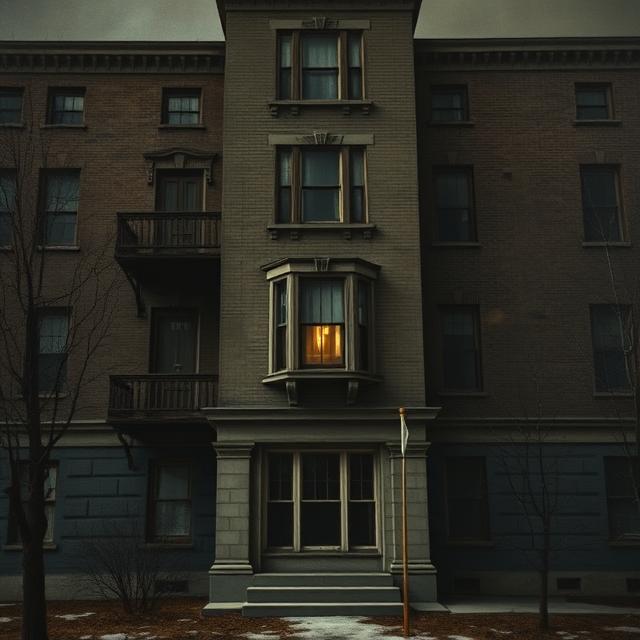Apartment 213 was a modest, ground-floor unit in the Oxford Apartments building. Its mundane exterior offered no hint of the unimaginable horrors that transpired within its cramped spaces between 1990 and Dahmer’s arrest in July 1991. This small, rented apartment became a charnel house, a place where the boundaries of human depravity were chillingly redefined. To understand the true story of Apartment 213 is to confront the stark reality of Dahmer’s methods and the profound tragedy of his victims.
The layout of Apartment 213 was simple: a living room, a small kitchen, a bedroom, and a bathroom. It was within these ordinary rooms that Dahmer enacted his gruesome rituals. He would typically meet his victims – young, often marginalized men of color – in bars or other public places. He would then lure them back to his apartment with promises of money, alcohol, or companionship. Once inside, he would drug them, often with a sedative called Halcion, rendering them unconscious and vulnerable.
The bedroom became the primary site of Dahmer’s most heinous acts. It was here that he would sexually assault his victims, often while they were incapacitated. He would then proceed to murder them, frequently by strangulation or blunt force trauma. But the horror did not end with death. Dahmer engaged in necrophilia and the dismemberment of his victims’ bodies.
The small kitchen and bathroom of Apartment 213 became makeshift laboratories for Dahmer’s macabre experiments. He would attempt to preserve the bodies of his victims, sometimes by injecting them with formaldehyde. He also engaged in the boiling and defleshing of bones, keeping skulls and other skeletal remains as trophies. These acts reveal a deeply disturbed mind obsessed with control, possession, and the grotesque manipulation of human remains.
The living room, the first space his victims would have encountered, served as a deceptive facade of normalcy. It was here that Dahmer would engage in conversation, offering drinks and creating a false sense of security before revealing his sinister intentions. The ordinariness of the space stands in stark contrast to the unimaginable terror that awaited in the adjacent rooms.
The walls of Apartment 213 bore silent witness to the suffering of Dahmer’s victims. The air within its confines was thick with the unseen residue of unimaginable acts. The furniture, the appliances, the very structure of the apartment became imbued with a chilling significance, forever linked to the darkness that had taken root there.
The discovery of Dahmer’s crimes in July 1991 was accidental. Tracy Edwards, one of Dahmer’s intended victims, managed to escape his apartment and flag down police. Edwards recounted his terrifying ordeal, leading officers to Apartment 213. What they found inside was a scene so gruesome and bizarre that it shocked even seasoned investigators.
The apartment was filled with the stench of decomposition. Human remains were found scattered throughout the unit: skulls in the bedroom, torsos in a barrel filled with acid, severed hands and other body parts in the refrigerator. Polaroids documenting Dahmer’s victims in various states of dismemberment were also discovered, providing irrefutable evidence of his monstrous acts.
The meticulous and organized nature of the remains suggested a methodical and ritualistic approach to Dahmer’s crimes. He wasn’t simply killing; he was engaging in a deeply personal and profoundly disturbing process of control and desecration.
The layout of Apartment 213, while small, became a stage for a prolonged and escalating nightmare. The victims, lured into this seemingly ordinary space, entered a world of unimaginable terror from which they would never return. The apartment became a tomb, a repository of stolen lives and unspeakable acts.
Following Dahmer’s arrest and conviction, Apartment 213 became a site of morbid fascination. The Oxford Apartments building itself became synonymous with the horror of his crimes. The apartment was eventually vacated and remained vacant for some time, a tangible reminder of the darkness that had resided there.
The building and the apartment serve as a stark reminder of the banality of evil. Dahmer was not some shadowy figure lurking in the darkness; he was a neighbor, a resident of an ordinary building in an ordinary city. His crimes unfolded within the confines of a seemingly normal domestic space, highlighting the unsettling reality that unimaginable horror can sometimes be hidden in plain sight.
The legacy of Apartment 213 is one of profound tragedy and enduring horror. It is a place forever linked to the names of Dahmer’s victims: Errol Lindsey, Tony Hughes, Konerak Sinthasomphone, and many others. Their lives were brutally cut short within those walls, and the apartment stands as a silent testament to the devastating consequences of Dahmer’s monstrous desires.
The apartment building still stands, though Apartment 213 itself has been significantly altered over time. It serves as a grim landmark in the history of Milwaukee and a chilling reminder of the darkness that can reside within the human heart. The story of Apartment 213 is not just about the physical space; it is about the lives that were taken there, the unimaginable suffering endured, and the enduring quest to understand the depths of human depravity. It remains a haunting chapter in the sinister archive of true crime, a place forever etched in the memory of a city that unknowingly harbored a monster in its midst.
Want to explore the shadows even deeper? For more chilling cases like this, visit SinisterArchive.com, where the legends are real.




